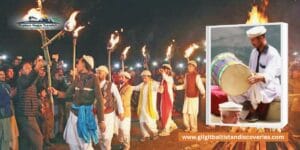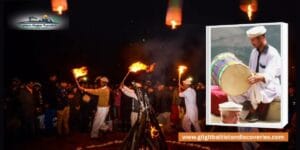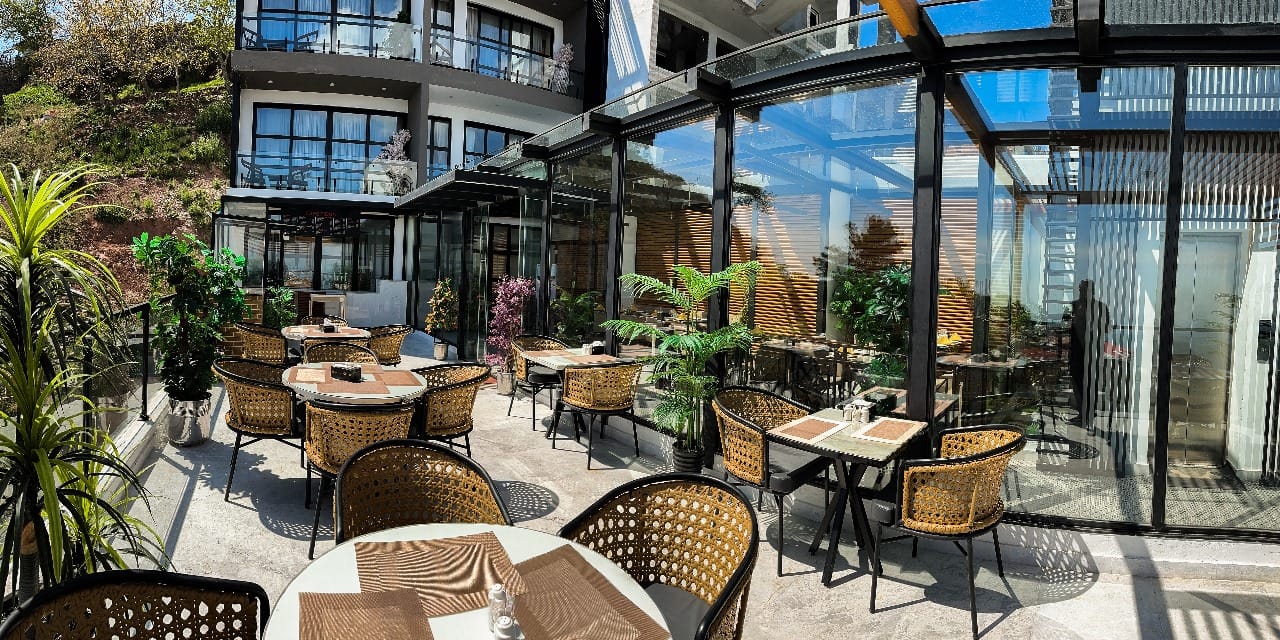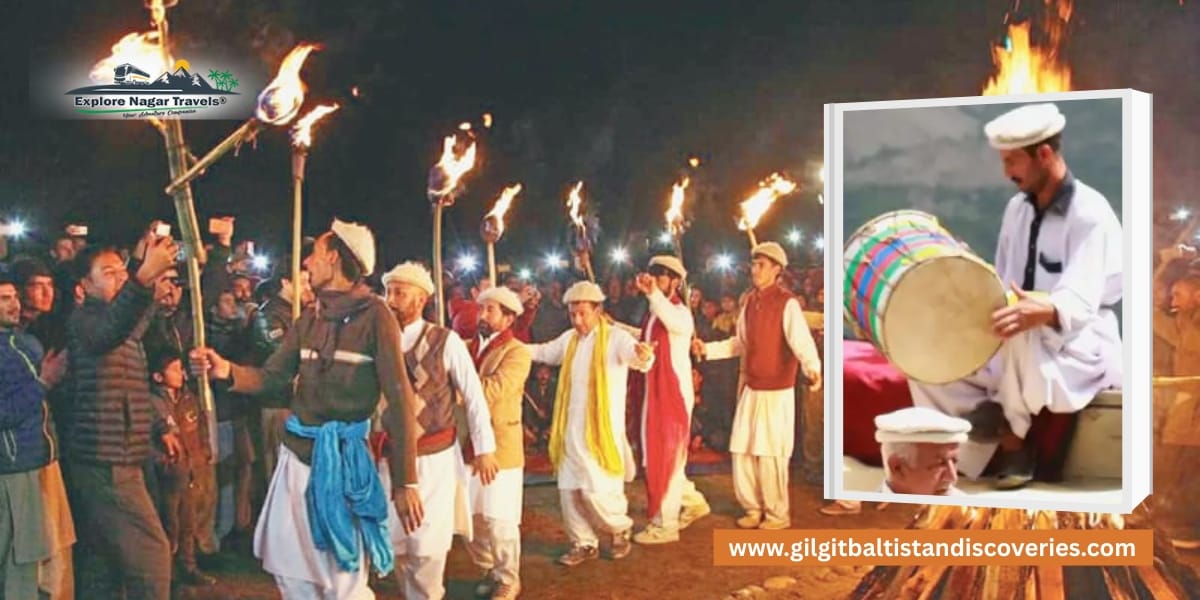Have you ever visited Rakaposhi? If not, we are here to guide you through the breathtaking landscape of the Rakaposhi Basecamp Trek.
Rakaposhi Mountain is the highest peak, about 7800 meters, in Nagar Valley (northern Pakistan). It is the most iconic peak in the Karakoram range, visible from the Karakoram Highway.
Rakaposhi is one of the most beautiful peaks, the 27th-highest mountain on Earth. The trekking route for Rakaposhi starts from Minapin Village in Nagar Valley, Gilgit Baltistan. This trek is considered one of the easiest in Karakoram and suits all levels of physical fitness and age factors. It also gives the taste of walking, including crossing the Minapin Glacier. The Minapin Glacier connects Rakaposhi and Diran with its long, fluted, snowy ridge.
Table of Contents
ToggleDo you know Tagapahri?
Trek from Minapin to Rakaposhi, also known as “Tagaphari,” is an ideal introduction to the Karakoram trekking, offering a sense of soft adventure in the Karakoram range of mountains.
It takes 2-3 hours to reach Hapakun from Minapin Village, a very clean and pleasant campsite. From Hapakun to Rakaposhi Basecamp, it takes almost three to four hours of slow walking. It is better to consider trekking in the morning to avoid the sun’s heat. Fixed camping sites are also available for nights. The local communities of this area are tourist-friendly and very vigilant.
Here, you have two options to enjoy the trekking process. One is Diran Base Camp, and the other is Tagaphari to explore the Rakaposhi Base Camp. Diran Base Camp is next to the Katchelly glacier, and the glacial deposit takes 2-3 hours to reach. It’s optional; anyone can go for 6-7 hours, spend the night there, and return to Tagapahari in the morning.
And what better way to experience its magnificence than with the Rakaposhi Basecamp Trek?
This trek isn’t just about reaching a destination. It’s a journey through stunning landscapes, diverse cultures, and personal discovery. Whether you’re a seasoned trekker or an eager beginner, the Rakaposhi Basecamp Trek offers something for everyone. Let’s have a look!
Must Read: Best Places to Visit in Skardu-Gilgit Baltistan
Rakaposhi Basecamp Trek Journey
The Rakaposhi Basecamp Trek is relatively easy for a high-altitude trek in the Karakorams. The path is clear and easy to follow. Our guide to Rakaposhi Basecamp Trek will help you to hike much more easily.
1. Starting Point: The Minapin Village
Imagine arriving in Minapin, a village with lush green orchards and snow-capped peaks. The air is crisp and clean, filled with the fragrance of apricot blossoms. Friendly locals greet you with warm smiles, offering a glimpse into the unique culture of the Nagar Valley. Here, you’ll find cost guesthouses where you can rest and prepare for your upcoming adventure.
2. Gradual Ascent
The initial trails are like a gentle introduction to the majestic mountains. You’ll walk through meadows bursting with wildflowers, their vibrant colours contrasting with the snow-capped peaks in the distance. Apricot groves offer shade and a chance to taste the local delicacy. The moderate pace lets you ease into the trek and gradually acclimate to the increasing altitude.
3. Camping Under the Stars
As you progress, the landscape transforms. Designated campsites like Hapakun and Tagaphari provide stunning backdrops for your nightly rest. Imagine pitching your tent under a canopy of stars and the Milky Way stretched across the vast night sky. The silence is broken only by the occasional crackle of the campfire and the distant whisper of mountain streams. This is a chance to connect with nature truly and appreciate the simple beauty of the outdoors.
More Suggested Readings: Hopar Glacier Tour Plan-A Comprehensive Guide and Rush Lake Tour Plan Nagar
4. Reaching the Rakaposhi Basecamp
The final push towards the base camp is where the challenge intensifies. The territory becomes steeper, with glacial deposits and landscapes adding a sense of adventure. But the reward is worth every step. As you reach the base camp, you’ll be awestruck by the panoramic vista of Rakaposhi’s majestic peak towering above you. The vastness of the Minapin Glacier stretches out before you, a testament to the power of nature. This is a moment of triumph, a chance to celebrate your accomplishment and soak in the breathtaking views.
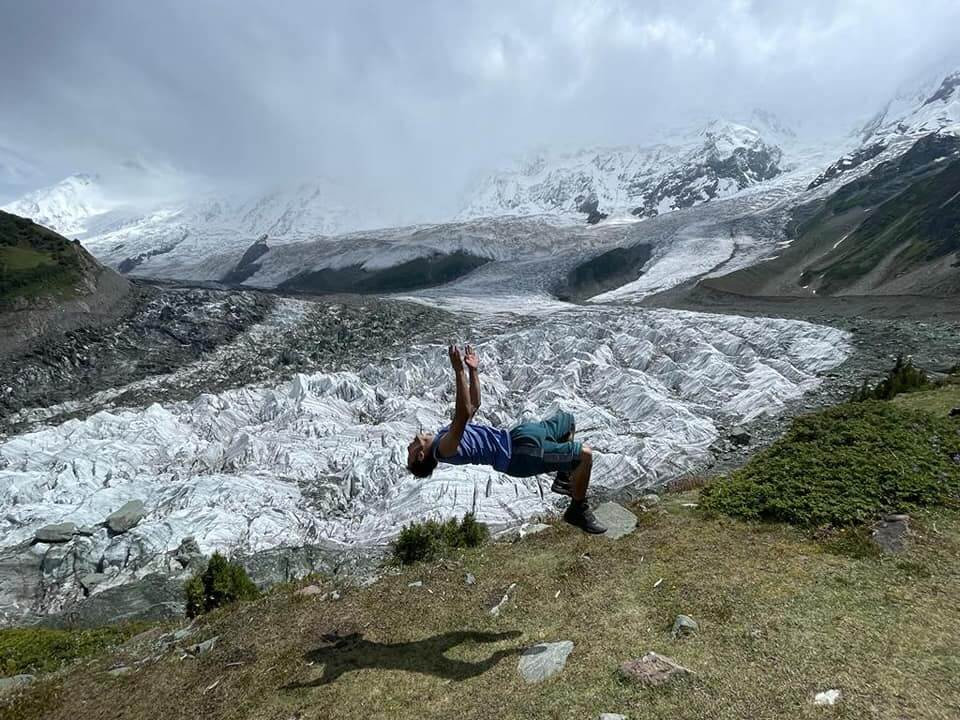
5. Time for Reflection
Spend a day exploring the base camp, allowing the grandeur of the mountains to sink in. Hike up nearby ridges for even more stunning panoramas, or try your hand at glacier walking for an adrenaline rush. But most importantly, take time for reflection. What challenges did you overcome? What did you learn about yourself? This is a journey of self-discovery as much as a physical adventure.
6. Descent and Departing Memories
The return journey follows the same route but with a different perspective. You’ll appreciate the scenic landscapes you encountered on your way up, now enriched with the memories of your accomplishment. As you depart Minapin, you’ll carry with you not just souvenirs and photos but a newfound appreciation for the mountains, the local culture, and your inner strength.
Remember: This is just a glimpse into the Rakaposhi Basecamp trek. Each step offers unique experiences and challenges, making it an unforgettable adventure for anyone who dares to visit.
Read More: Best Places to Visit in Naltar Valley and Best Places to Visit in Hunza and Ghizar Valley

Rakposhi Basecamp Trek Itinerary
You can complete the Rakaposhi Basecamp Trek in only two days if you are physically fit. But if you want to enjoy the real taste of trekking, including a glacier and Diran Basecamp, we strongly recommend spending three to four days.
1st Day: From Minapin to Hapakun, Including Diran Glacier
After a 2-kilometer detour from the Karakoram Highway, Minapin, a small, quaint settlement, is located 70 kilometers from Gilgit. It serves as the base camp for both Rakaposhi and Diran.
Between Minapin and the Rakaposhi base camp, Hakapun is a small campsite that makes an ideal first night’s stay and provides access to the Diran glacier.
It takes around four or five hours to get to Hakapun, and the track is very simple to follow—the final few kilometers are a little unclear, though. But there will probably be shepherds along the route who will show you the way.
You can see the magnificent Diran glacier, a huge sea of ice made up of roughly 20-meter-long ice slabs, from the camp. The glacier cannot now be crossed or walked over, but you can still go very close—you can even touch it. The continual clamor of shattering ice is a summertime nuisance.
The greatest low-cost hotel in Gilgit-Baltistan is Hotel Osho Thang, where you may stay at Minapin. It features a reasonably priced restaurant that even the local politicians frequent. The owner is really friendly and has decent English. Cherry trees abound in the yard if you visit in the spring. There are dorms and private rooms available.
2nd Day: From Hapakun to Rakaposhi Basecamp Trek
Although the base camp is only 4 or 5 kilometers from Hapakun, the steep trail may require 3 or 4 hours of hiking.
We recommend you begin your walk early because the sun’s rays might be fatal as early as 5 a.m. Pakistan observes a 5 a.m. sunrise at least in the spring.
The Rakaposhi base camp is one of the most amazing places we have ever gone camping. If you ascend any of the nearby hills, you can spend the entire day exploring the breathtaking 360-degree view that awaits you.
3rd Day: Diran Basecamp Trekking
If you have the time, we suggest hiking the third day to the 7,200-meter-high Diran base camp. Since the base camp is directly across the glacier, getting there will require you to traverse it and jump over 30-meter-deep crevasses (deep cracks in a glacier). What a journey.
In contrast to the section of the glacier adjacent to Hapakun, this one allows for walking. The journey to Diran Base Camp took over five hours.
Commence trekking at five in the morning, return to the Rakaposhi base camp by ten, and then retrace your steps to Minapin. Although it could be completed in a day, including breaks, it took 12 hours to get to Minapin.
Gems of the Rakaposhi Basecamp Trek
While conquering the Rakaposhi Basecamp itself is an exhilarating feat, the true magic of this trek lies in the experiences that extend far beyond the physical challenge. The Rakaposhi Basecamp journey is a chance to step outside your comfort zone, embrace new cultures, discover hidden wonders, and profoundly connect with yourself and the natural world. So, lace up your boots, pack your bags, and get ready toon an adventure that will stay with you long after you return home. Here’s a deeper hangout into what awaits you:
1. Beauty of Local Culture
The trek isn’t just about reaching a summit; it’s about connecting with the people and traditions that call the Nagar Valley home. Stay in locally run guesthouses, where families welcome you openly and share stories about their lives and heritage. Learn about their unique customs, clothing, and way of life, gaining a deeper understanding of the region’s rich tapestry.
Read More: Famous Dishes of Gilgit-Baltistan
2. Discovering Hidden Gems
The trail unfolds like a treasure map, revealing hidden gems beyond the main path. Explore cascading waterfalls tucked away in verdant valleys, their cool spray a refreshing reward after a day’s hike. Visit ancient mosques, their intricate architecture whispering tales of the past. Hike to remote viewpoints for breathtaking panoramas that will leave you speechless. Embrace the spirit of adventure and discover the hidden secrets the mountains hold.
3. Testing Your Limits
The trek is a physical challenge that pushes you beyond your comfort zone. As you ascend, your lungs will work harder, your muscles will ache, and your determination will be tested. But with each step, you’ll build resilience and discover a strength you never knew you possessed. Pushing your limits is not just about reaching the base camp; it’s about finding your inner potential and the depths of your resolve.
Let’s have a look at Top Hotels in Nagar Valley
4. Connecting with Nature
The Rakaposhi Basecamp trek is a journey into the heart of the Himalayas, a chance to reconnect with nature’s raw power and beauty. Immerse yourself in the vastness of the mountains, the crisp mountain air, and the sounds of rushing streams. The changing seasons paint the landscape in vibrant hues, from spring’s wildflowers to winter’s snow-covered peaks. This connection with nature fosters a sense of peace, awe, and appreciation for the world around you.
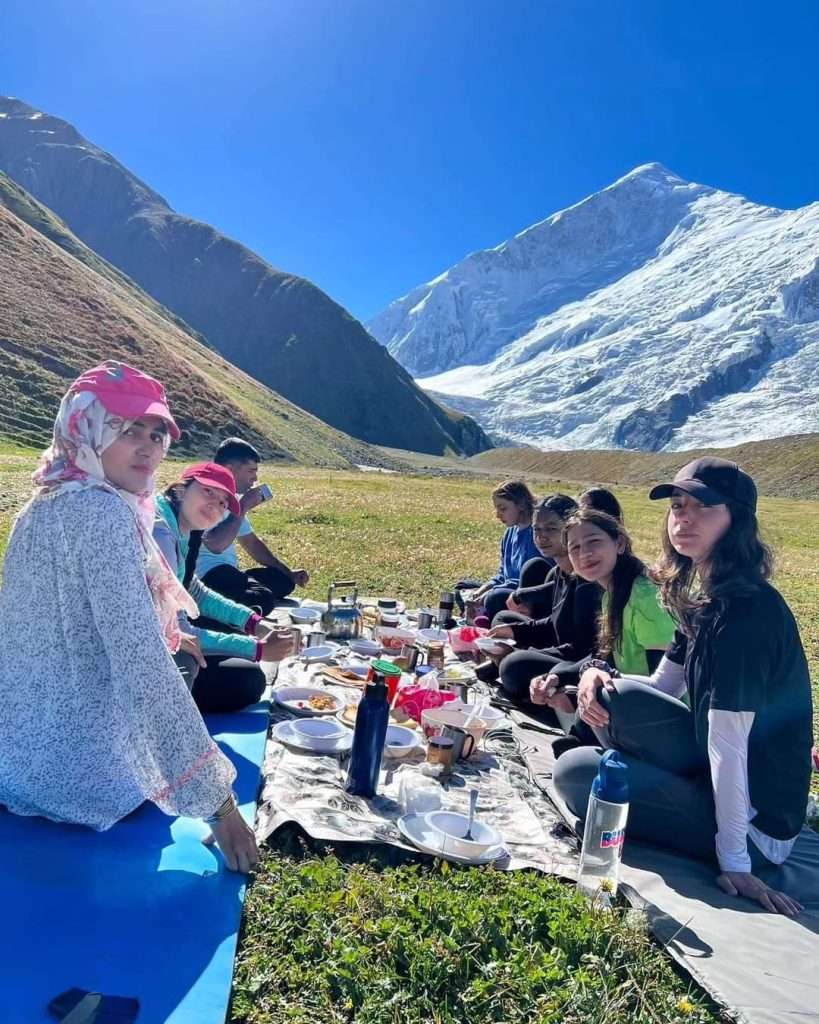
Planning Your Rakaposhi Basecamp Trek
Conquering the Rakaposhi Basecamp isn’t just about strapping on your boots and hitting the trail. Careful planning goes a long way in ensuring a safe, enjoyable, and successful adventure. Let’s break down the key points you mentioned:
Season
- April to October: This is the trekking season in the Karakoram range, offering the most pleasant weather conditions. Temperatures are mild, ranging from 10°C to 25°C during the day and dropping to around 5°C at night. Rainfall is minimal, ensuring clear skies and stunning views.
- Shoulder Seasons (April-May, September-October): If you prefer fewer crowds and slightly cooler temperatures, consider aiming for the shoulder seasons. Expect slightly higher rain chances in April and May, while September and October can be chilly at night.
- June to August: While technically possible, monsoon season brings frequent rain and potential landslides, making trekking challenging and potentially dangerous.
Fitness Level
- Moderate: While not considered technical, the Rakaposhi Basecamp trek involves gradual ascents with some steeper sections, particularly towards the basecamp. The total distance is 15-20 kilometers, with an elevation gain of about 1,200 meters.
- Preparation: Regular training beforehand is crucial. Focus on building cardiovascular endurance through hiking, running, or swimming. Strengthen your leg muscles with squats, lunges, and stair climbing. Acclimatize to higher altitudes, gradually increasing your training elevation over time.
- Guides: Consider hiring a local guide, especially if you’re not an experienced trekker. They can provide invaluable assistance with navigation, safety, and cultural insights.
Logistics
- Guided Treks: Numerous tour operators offer guided treks with various packages, including equipment rental, meals, permits, and transportation. This convenient option covers most logistical details but can be more expensive.
- Independent Trek: If you’re comfortable planning your trip, independent trekking can be more affordable and personalized. However, it requires thorough research, obtaining permits, arranging transportation, and potentially hiring local porters or guides.
Additional Considerations
- Permits: Obtain necessary permits well in advance, including trekking and National Park entry permits.
- Insurance: Travel insurance covering medical emergencies and trip cancellation is highly recommended.
- Vaccinations: Consult your doctor about recommended vaccinations for travel to Pakistan.
- Equipment: Pack appropriate clothing and gear for all weather conditions, including sturdy hiking boots, waterproof layers, warm clothing, and sun protection.
- Respect: Be mindful of local customs and traditions, and leave no trace on the environment.

Best Tips for Rakaposhi Basecamp Trek
Here are some necessary tips for the Rakaposhi Basecamp Trek. It is a challenging yet rewarding experience. Be prepared, respect the environment and local culture, and, most importantly, enjoy the journey!
Read More: Best Hotels in Hunza Valley
Preparation
- Start training well in advance. Build cardiovascular endurance and leg strength with hiking, running, and stair-climbing activities. Consider acclimatization training.
- Thoroughly research the trek, including weather conditions, route details, cultural norms, and necessary permits.
- Pack appropriate clothing and gear for all weather conditions, including sturdy hiking boots, waterproof layers, warm clothing, sun protection, and a first-aid kit. Remember to leave no trace behind.
- Before starting the trek, spend a few days in a lower-altitude town like Karimabad.
- Consider hiring a local guide, especially if you’re not an experienced trekker. They can provide invaluable assistance with navigation, safety, and cultural insights. If traveling solo, join a guided group trek.
On the Trail
- Start slow and gradually increase your pace as you acclimatize. Listen to your body and take breaks as needed.
- Drink plenty of water throughout the trek. Invest in a good water purification system or purchase treated water at designated points.
- Avoid ascending too quickly, especially on the first day. Take rest days and avoid sleeping at high altitudes on your first night.
- Be aware of symptoms like headache, dizziness, and nausea. Describe if you experience severe symptoms.
- Minimize waste, avoid polluting water sources, and respect local flora and fauna.
- Dress modestly, be mindful of local customs, and avoid photographing people without permission.
Some Bonus Tips
- Local shops and guesthouses may not accept cards.
- It will enhance your experience and interaction with locals.
- Get comprehensive travel insurance covering medical emergencies and trip cancellations.
- Sample delicious dishes like chapati, pulao, and Hunza Nagar apricot cake.
- Explore the charming village and interact with locals before and after the trek.
- Visit historical sites and museums to learn about Nagar culture. This will deepen your understanding of the region’s rich history and traditions.
- If carrying your backpack is challenging, consider hiring local porters to ease your load.
- They can provide stability and support, especially on steeper sections.
- Capture the breathtaking views and document your unforgettable adventure.
- Support local businesses, tip guides, and porters fairly and contribute to responsible tourism practices.
- Don’t just focus on reaching the base camp. Take in the beautiful scenery, unique culture, and personal journey.
6 Days Rakaposhi Base Camp Trek Nagar Valley & Hunza: View Detail
9 Days Rakaposhi Base Camp Trek Nagar Valley & Hunza: View Details
Additional Resources
- Rakaposhi Base Camp Trek Guide: https://exploretraveloasis.com/
- How to Hike the Rakaposhi Base Camp: https://www.bucketlistly.blog/posts/rakaposhi-base-camp-hiking-pakistan-guide
- Rakaposhi Basecamp Trek with a Local Guide: https://hunzaguidespakistan.com/tours/rakaposhi-base-camp-trek/
Are You Ready for the Challenge?
The Rakaposhi Basecamp trek is more than just a hike; it’s a soul-stirring adventure that tests your limits, immerses you in breathtaking landscapes, and connects you with a vibrant culture. Whether you’re a seasoned trekker or an eager adventurer, this journey offers an unforgettable experience. So, pack your bags, lace up your boots, and prepare to be captivated by the magic of the King of Mountains.
But before you get on, tell us: How was this article helpful? Are you ready to conquer the challenge? Please share your thoughts and questions below, and let’s explore the Rakaposhi Basecamp trek together!

FAQs about Rakaposhi Basecamp Trek
Is the Rakaposhi Basecamp trek difficult?
It’s considered moderate, with gradual ascents and a total distance of around 20km. However, the altitude gain (about 1200m) and some steeper sections towards the base camp require good fitness and proper acclimatization. Hiring a guide can be helpful, especially for beginners.
What’s the best season to go?
April to October offers pleasant weather, but aim for shoulder seasons (April-May, September-October) for fewer crowds and moderate temperatures. Avoid monsoon season (June-August) due to potential rain and landslides.
Do I need a guide?
It’s not mandatory, but it’s highly recommended if you’re new to trekking, unfamiliar with the area, or prefer assistance with navigation, safety, and cultural insights. Guides can also provide valuable local knowledge and arrange logistics like permits and porters.

What’s the accommodation like?
Camping is the primary option, with designated campsites offering stunning backdrops. Expect basic amenities like tents, sleeping mats, and communal dining areas. Some tour companies provide more comfortable camp setups with amenities like toilets and showers.
What are the essential things to pack?
Sturdy hiking boots, weather-appropriate clothing for all conditions (warm layers, waterproofs), sun protection, a headlamp, water purification tablets, a basic first-aid kit, and personal toiletries. Trekking poles can provide stability, and consider a camera to capture the breathtaking scenery.
Is the Rakaposhi Basecamp trek worth it?
Absolutely! The stunning scenery, cultural immersion, and sense of accomplishment make it an unforgettable experience. But remember, it’s not just a walk in the park. Be prepared for the challenge, and you’ll be rewarded with memories that will last a lifetime.
How much does the Rakaposhi Basecamp trek cost?
Costs vary depending on whether you choose a guided or independent trek. Guided treks typically range from PKR 100k for locals and up to 150k for overseas, covering meals, permits, transportation, and equipment rental. Independent trekking can be cheaper but requires thorough planning and arrangements for permits, porters, and equipment. Guided group trekking can be much more inexpensive than the above cost.
Is it safe to do the Rakaposhi Basecamp trek solo?
While technically possible, solo trekking has inherent risks, especially regarding altitude sickness, navigation, and potential wildlife encounters. If considering solo trekking, ensure you have extensive experience, proper permits, and emergency communication devices. A guide is highly recommended for most individuals.
What kind of food will I be eating on the trek?
Most guided treks provide meals prepared by local cooks. The menu features a mix of local Pakistani dishes and basic camping fare. Expect rice, lentils, vegetables, and occasional meat dishes. Be sure to inform tour operators about any dietary restrictions in advance. Independent trekkers need to plan and carry their own food supplies.
What are the toilet facilities like on the trek?
Camping sites typically have basic pit toilets. Some tour companies offer more comfortable options, like portable toilets or campsite facilities with showers. Be prepared for basic facilities and pack hand sanitizer and toilet paper regardless of your choice.
What additional things can I do in the Nagar Valley besides the trek?
The Nagar Valley offers various activities beyond the trek. Explore quaint villages like Karimabad, visit historical sites like Altit Fort, indulge in local cuisine, hike to glaciers, or go on day trips to nearby valleys. You can also learn about local crafts and immerse yourself in the region’s rich cultural heritage.
What unique challenges might I face on the Rakaposhi Basecamp trek?
In addition to altitude and physical demands, be prepared for unpredictable weather conditions, potential wildlife encounters, limited access to amenities, and cultural differences. Embrace these challenges as part of the adventure and come equipped with adaptability and open-mindedness.
Share your thoughts and questions below!
Have any other questions about the Rakaposhi Basecamp trek? What are your biggest concerns or most exciting aspects? Please share your thoughts in the comments below, and let’s discuss this epic adventure together!
Read More: Best Places to Visit in Naltar Valley
Have a look at the best honeymoon places to visit in Pakistan


